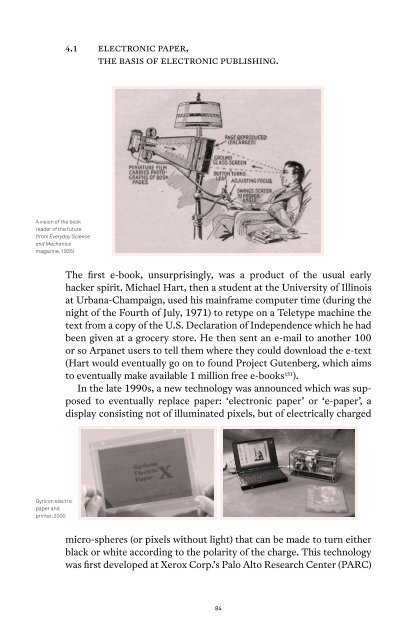Post- Digital Print - Monoskop
Post- Digital Print - Monoskop
Post- Digital Print - Monoskop
Create successful ePaper yourself
Turn your PDF publications into a flip-book with our unique Google optimized e-Paper software.
A vision of the book<br />
reader of the future<br />
(from Everyday Science<br />
and Mechanics<br />
magazine, 1935)<br />
Gyricon electric<br />
paper and<br />
printer, 2000<br />
4.1 electronic paper,<br />
the basis of electronic publishing.<br />
The first e-book, unsurprisingly, was a product of the usual early<br />
hacker spirit. Michael Hart, then a student at the University of Illinois<br />
at Urbana-Champaign, used his mainframe computer time (during the<br />
night of the Fourth of July, 1971) to retype on a Teletype machine the<br />
text from a copy of the U.S. Declaration of Independence which he had<br />
been given at a grocery store. He then sent an e-mail to another 100<br />
or so Arpanet users to tell them where they could download the e-text<br />
(Hart would eventually go on to found Project Gutenberg, which aims<br />
to eventually make available 1 million free e-books 151 ).<br />
In the late 1990s, a new technology was announced which was supposed<br />
to eventually replace paper: ‘electronic paper’ or ‘e-paper’, a<br />
display consisting not of illuminated pixels, but of electrically charged<br />
micro-spheres (or pixels without light) that can be made to turn either<br />
black or white according to the polarity of the charge. This technology<br />
was first developed at Xerox Corp.’s Palo Alto Research Center (PARC)<br />
84

















